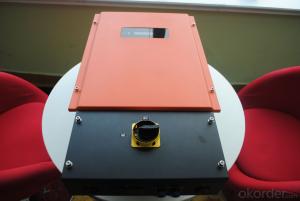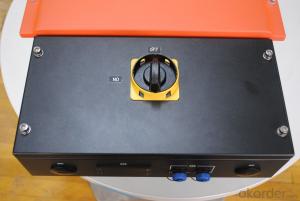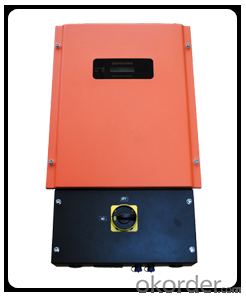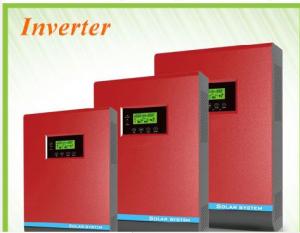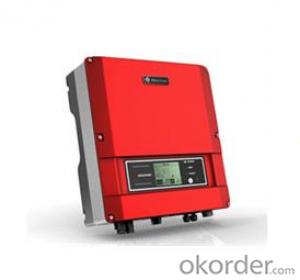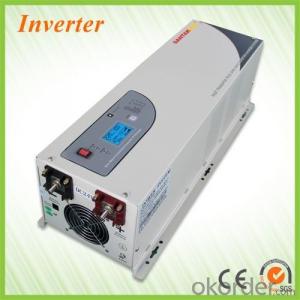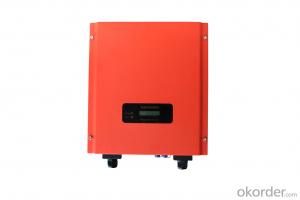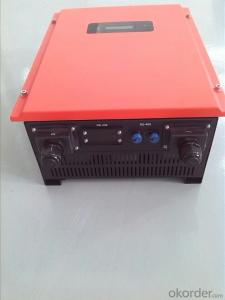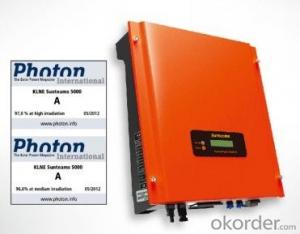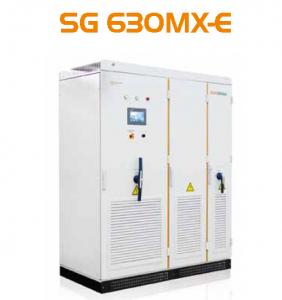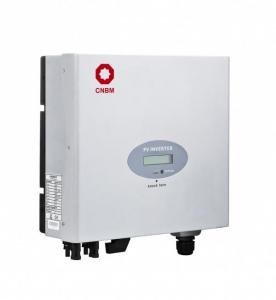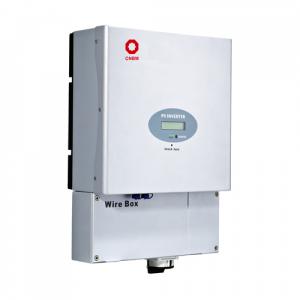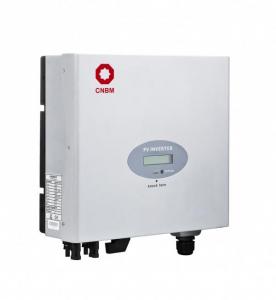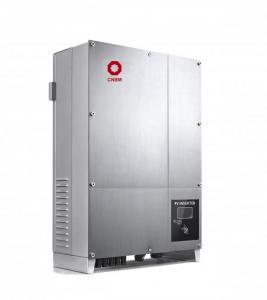12V MPPT Solar Inverter Sunteams 1500-3000 (US) ETL with Wirebox
- Loading Port:
- China Main Port
- Payment Terms:
- TT OR LC
- Min Order Qty:
- -
- Supply Capability:
- -
OKorder Service Pledge
OKorder Financial Service
You Might Also Like
The Sunteams (US) 1500 ~5000 series isapplicable to various rooftops and small scale photovoltaic grid connected power plants. Their nominal output powers are 1.5 kW, 2 kW, 3 kW, 4 kW and 5kW respectivelywith Certificate ETL (220V/60HZ).
This series is transformerless and has a wide range of MPPT input voltage. Itsmaximum conversion efficiency and MPPT tracking accuracy reach 97.6 % and 99.5% respectively. The maximum DC voltage reaches 550 V. Its multilingualLCD display facilitates easy operation. It has waterproof direct plug interminals. It has overvoltage, islanding, short circuit, overloading andoverheating protection functions. Its IP65 protection degree will ensure itruns well in various tough environments.
- Q: Can a solar inverter be integrated with smart home systems?
- Yes, a solar inverter can be integrated with smart home systems. Smart home systems are designed to connect and control various devices in the home, including solar inverters. By integrating a solar inverter with a smart home system, homeowners can monitor and control their solar energy production, consumption, and storage, as well as optimize energy usage based on real-time data. This integration allows for greater efficiency, convenience, and cost savings in managing solar power within a smart home ecosystem.
- Q: How does a solar inverter handle voltage and frequency variations caused by sudden load changes?
- Efficient and reliable, a solar inverter is specifically engineered to manage fluctuations in voltage and frequency resulting from sudden changes in load. When such changes occur, the solar inverter effectively employs a variety of control mechanisms to regulate and stabilize the output voltage and frequency. To begin with, the inverter continuously monitors the incoming solar power, keeping a close eye on the voltage and frequency. If any variations arise due to sudden load changes, the inverter promptly adjusts its internal control systems to compensate. Utilizing advanced power electronics and control algorithms, the inverter ensures that the voltage and frequency remain within the desired range. In order to handle voltage fluctuations caused by sudden load changes, the solar inverter utilizes a technique known as voltage regulation. It automatically adjusts the output voltage, either raising or lowering it as necessary. This guarantees that the inverter delivers a steady and consistent voltage supply to the load, effectively preventing any harm or malfunction. Similarly, to address frequency variations brought on by sudden load changes, the solar inverter employs a technique called frequency regulation. It adjusts the output frequency to match the grid frequency or meet specific frequency requirements. By maintaining the desired frequency, the inverter ensures compatibility and synchronization with the grid or other connected devices. In addition to voltage and frequency regulation, solar inverters also incorporate protective features to handle sudden load changes. They are equipped with built-in overload protection mechanisms capable of detecting excessive loads and preventing damage to both the inverter and the connected devices. These protective features may include safeguards such as overcurrent protection, short-circuit protection, and temperature monitoring. In summary, a solar inverter is purposefully designed to effectively manage voltage and frequency variations arising from sudden load changes. Through its voltage and frequency regulation capabilities, as well as its protective features, the inverter ensures stable and reliable operation. This enables the inverter to adapt efficiently to changing load conditions while safeguarding the integrity of the power supply.
- Q: How do you connect a solar inverter to solar panels?
- To connect a solar inverter to solar panels, you need to follow a few steps. First, ensure that the solar panels are properly installed and positioned to receive maximum sunlight. Then, connect the positive and negative terminals of the solar panels to the corresponding terminals on the solar inverter. Make sure to use appropriate cables and connectors for a secure connection. Once the connections are made, the solar inverter will convert the solar energy generated by the panels into usable electricity for your home or business.
- Q: How does a solar inverter handle voltage regulation during sudden load changes?
- A solar inverter handles voltage regulation during sudden load changes by continuously monitoring the voltage levels and adjusting the power output accordingly. When there is a sudden increase in load, the inverter will automatically increase its power output to meet the demand and maintain a stable voltage. Conversely, if there is a sudden decrease in load, the inverter will reduce its power output to prevent voltage spikes and maintain a consistent voltage level. This dynamic response allows the solar inverter to effectively regulate voltage during sudden load changes and ensure the stability and reliability of the solar power system.
- Q: How does a solar inverter handle variations in AC load demand?
- A solar inverter handles variations in AC load demand by constantly monitoring the load and adjusting the output power accordingly. It uses advanced control algorithms to regulate the voltage and frequency of the AC output to match the specific requirements of the connected devices. This allows the inverter to effectively handle fluctuations in load demand and ensure a stable power supply.
- Q: Can a solar inverter be used with a solar-powered electric gate system?
- Yes, a solar inverter can be used with a solar-powered electric gate system. The solar inverter is responsible for converting the direct current (DC) produced by the solar panels into alternating current (AC) that can be used to power the electric gate system. This allows for efficient and reliable operation of the gate system using solar energy.
- Q: How long do solar inverters typically last?
- Solar inverters typically last for around 10 to 15 years, although some high-quality inverters can last up to 20 years with proper maintenance and regular inspections.
- Q: Can a solar inverter be used with different types of communication protocols?
- Yes, a solar inverter can be used with different types of communication protocols. Many modern solar inverters are designed to be compatible with multiple communication protocols such as Wi-Fi, Ethernet, RS485, and Modbus. This allows for versatile integration with various monitoring systems, smart home technologies, and remote monitoring platforms, offering flexibility and convenience for users.
- Q: Can a solar inverter be used in off-grid systems?
- Yes, a solar inverter can be used in off-grid systems. Off-grid systems rely on solar panels to generate electricity and store it in batteries for use when the sun is not shining. A solar inverter is necessary to convert the direct current (DC) produced by the solar panels into alternating current (AC) that is usable by common household appliances.
- Q: How does a solar inverter handle electromagnetic interference?
- A solar inverter handles electromagnetic interference by utilizing filters and shielding techniques to minimize the impact of external electromagnetic disturbances. These measures help ensure that the inverter operates efficiently and reliably, without any significant disruption caused by electromagnetic interference.
Send your message to us
12V MPPT Solar Inverter Sunteams 1500-3000 (US) ETL with Wirebox
- Loading Port:
- China Main Port
- Payment Terms:
- TT OR LC
- Min Order Qty:
- -
- Supply Capability:
- -
OKorder Service Pledge
OKorder Financial Service
Similar products
Hot products
Hot Searches
Related keywords

